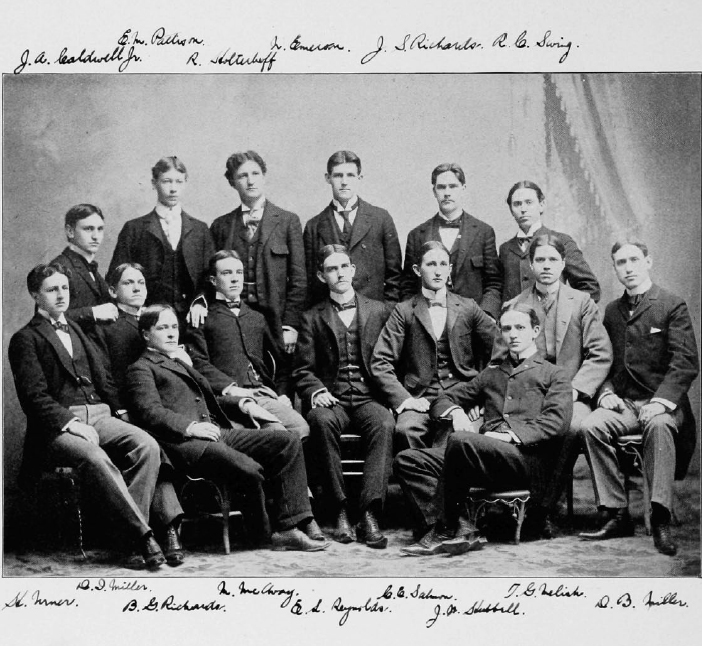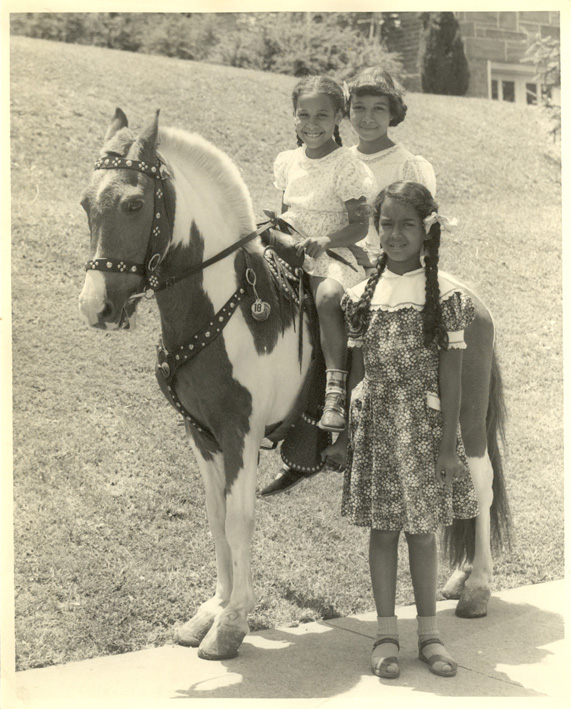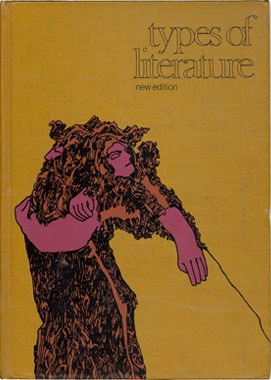By Laura Laugle

By Laura Laugle
By Janice Schulz
The Archives & Rare Books Library holds a unique collection of local government records vital to the understanding of Cincinnati’s growth from a small walking city into the expansive metropolitan area that exists today. Acquired in 1996 from the Cincinnati Clerk of Council and through the Ohio Network of American History Research Centers program, the Cincinnati Annexation Collection includes annexation records generated by the City and the villages from 1869 to 1939 as well as former village records acquired by Cincinnati at the time of annexation, some dating back to 1829. These records are an excellent resource for researching the history of Cincinnati’s neighborhoods.
By: Laura Laugle
 It (finally!) stopped raining long enough for me to transport some photos from here in the Blegen Library across campus to the Langsam Library to Preservation Services. My favorite among the photos needing repair work are some wonderful panoramic photos from the 1930s of both the Cincinnati chapter and annual conventions of Alpha Phi Alpha, the nation’s first intercollegiate fraternity for African American men. These photos are quite large, around 30-46 inches long and are beautifully done group shots of the members in their spiffiest attire. While those materials are currently undergoing restoration, I would still like to share with you a number of other items I’ve found relating to AΦA. Continue reading
It (finally!) stopped raining long enough for me to transport some photos from here in the Blegen Library across campus to the Langsam Library to Preservation Services. My favorite among the photos needing repair work are some wonderful panoramic photos from the 1930s of both the Cincinnati chapter and annual conventions of Alpha Phi Alpha, the nation’s first intercollegiate fraternity for African American men. These photos are quite large, around 30-46 inches long and are beautifully done group shots of the members in their spiffiest attire. While those materials are currently undergoing restoration, I would still like to share with you a number of other items I’ve found relating to AΦA. Continue reading
By Laura Laugle
I don’t know about you, but when I think of retirement I think of time spent relaxing with cool drinks in a warm climate (at least, I think that’d be the ideal for many of us.) Apparently, Theodore M. Berry didn’t think so. If what I’ve lately found in the collection which he donated to the University of Cincinnati is any indication, I think I can safely say that Berry’s retirement, though most assuredly rewarding, was no walk in the park – not even when he took the neighbor’s dog out for a walk.
By: Janice Schulz
 In a continuing effort to showcase student life at the University of Cincinnati, the Archives and Rare Books Library has created an exhibit documenting the history of fraternities and sororities from 1882 to today. Going Greek: Fraternity and Sorority Life at the University of Cincinnati offers a historical view into the development of the Greek system at UC and its growth (and growing pains) as it became a social vehicle at the University and then settled into the comfortable position it enjoys today.
In a continuing effort to showcase student life at the University of Cincinnati, the Archives and Rare Books Library has created an exhibit documenting the history of fraternities and sororities from 1882 to today. Going Greek: Fraternity and Sorority Life at the University of Cincinnati offers a historical view into the development of the Greek system at UC and its growth (and growing pains) as it became a social vehicle at the University and then settled into the comfortable position it enjoys today.
Started in 1882 with the establishment of the Sigma Chi fraternity, the Greek system grew steadily in the following decades to become the primary social force at UC in the 1940s, 1950s, and into the 1960s. Political and social unrest in the 1960s forced the Greeks to redefine themselves and their values, creating a system more like what we know now. Continue reading
By Laura Laugle
 Is there anything better on a hot summer’s day than splashing around in the pool with friends? Maybe adding ice cream and a beach ball or two to the mix would improve the day but the pool would still be the main event. In the summer of 1950 Faith and Gail Berry, aged eleven and seven respectively, considered themselves to be extremely fortunate – they lived on Fairfax Avenue in Walnut Hills just a block away from Owl’s Nest pool. I can see the girls now – their summertime plans probably closely mirroring my own and those of my classmates forty-some-odd years later. Chores would be done as quickly as possible so that the cool, dewy mornings could be spent playing kickball in the backyard and roller skating in the street with other neighborhood children. After lunch there would be the mad dash to change into swimming gear followed by what should be a short walk to the municipal pool made longer by those inexorable needs to find and drag sticks along sidewalks and fences and to inspect the various creepy crawlies found along the way. Finally, the heat of the afternoon sun would be softened by diving, dunking, swimming and splashing in the cool water. So it should be for all children. But for the Berry girls there was a problem. Continue reading
Is there anything better on a hot summer’s day than splashing around in the pool with friends? Maybe adding ice cream and a beach ball or two to the mix would improve the day but the pool would still be the main event. In the summer of 1950 Faith and Gail Berry, aged eleven and seven respectively, considered themselves to be extremely fortunate – they lived on Fairfax Avenue in Walnut Hills just a block away from Owl’s Nest pool. I can see the girls now – their summertime plans probably closely mirroring my own and those of my classmates forty-some-odd years later. Chores would be done as quickly as possible so that the cool, dewy mornings could be spent playing kickball in the backyard and roller skating in the street with other neighborhood children. After lunch there would be the mad dash to change into swimming gear followed by what should be a short walk to the municipal pool made longer by those inexorable needs to find and drag sticks along sidewalks and fences and to inspect the various creepy crawlies found along the way. Finally, the heat of the afternoon sun would be softened by diving, dunking, swimming and splashing in the cool water. So it should be for all children. But for the Berry girls there was a problem. Continue reading
By Kevin Grace
The final 50 Minutes – 1 Book lunchtime talk for the academic year will be held Thursday, May 26, in the Archives & Rare Books Library, in the Schott Seminar Room, 814 Blegen Library at 12:00 noon.
April’s presentation was by conservator and bookbinding designer Gabrielle Fox, who spoke about the artist’s binding she did for an edition of Bobbie Ann Mason’s With Jazz. For May, we will turn to a bit of local history about Cincinnati’s ill-fated subway project of the 1920s. Engineering snafus, property damage, political finagling, low financing, and a changing transportation culture in the United States all led to the project’s demise. This topic of special public transportation is particularly timely, given Cincinnati’s current controversial issue of a publically-funded streetcar network for the Over-the-Rhine historic district. So from the Miami-Erie Canal to subway tunnels to Central Parkway, May’s talk will focus on one way Cincinnatians considered moving about from street to street, neighborhood to neighborhood. Continue reading
By Jameson Tyler, Archives & Rare Books Intern
 One of the most recent collecting areas in the Archives & Rare Books Library is the Historical Textbook Collection, transferred from the Curriculum Resources Center (now the CECH Library). Created by former CRC librarian Gary Lare, the Historical Textbook Collection is comprised of American textbooks from the 19th century to the end of the 20th. As part of the 2010-2011 ARB intern project, the collection will be organized and fully inventoried, and a collection development policy will be developed. An online exhibit has been initiated (http://www.libraries.uc.edu/libraries/arb/exhibits/historic-textbooks/index.html) to showcase select volumes as well as to provide a “textbook timeline” in the United States and to give a brief history of textbook publishing in Cincinnati. There are, of course, McGuffey readers, along with spellers, science books, history texts, social studies volumes, and the entire range of K-12 education textbooks. It is the aim of this project to position the collection for full cataloging and formal naming. Continue reading
One of the most recent collecting areas in the Archives & Rare Books Library is the Historical Textbook Collection, transferred from the Curriculum Resources Center (now the CECH Library). Created by former CRC librarian Gary Lare, the Historical Textbook Collection is comprised of American textbooks from the 19th century to the end of the 20th. As part of the 2010-2011 ARB intern project, the collection will be organized and fully inventoried, and a collection development policy will be developed. An online exhibit has been initiated (http://www.libraries.uc.edu/libraries/arb/exhibits/historic-textbooks/index.html) to showcase select volumes as well as to provide a “textbook timeline” in the United States and to give a brief history of textbook publishing in Cincinnati. There are, of course, McGuffey readers, along with spellers, science books, history texts, social studies volumes, and the entire range of K-12 education textbooks. It is the aim of this project to position the collection for full cataloging and formal naming. Continue reading
By Kevin Grace
 It will be 20 years in June that UC’s high rise dormitory was imploded, an event noted by news media from around the world. UC Magazine marks this two-decade anniversary with a video clip, photos, and eyewitness accounts of a Sunday morning filled with drama and dust: http://magazine.uc.edu/favorites/web-only/sander.html and http://www.youtube.com/watch?v=V5wCl8SrHUI&feature=player_embedded.
It will be 20 years in June that UC’s high rise dormitory was imploded, an event noted by news media from around the world. UC Magazine marks this two-decade anniversary with a video clip, photos, and eyewitness accounts of a Sunday morning filled with drama and dust: http://magazine.uc.edu/favorites/web-only/sander.html and http://www.youtube.com/watch?v=V5wCl8SrHUI&feature=player_embedded.
To learn more about the history of Sander Hall, as well as other buildings on UC’s campuses, contact the Archives & Rare Books Library at 513.556.1959, by email at archives@ucmail.uc.edu, or by visiting our website at www.libraries.edu/libraries/arb/index.html.
By Lilia Walsh

Board Members of CAGE, early 1980s: L-R Jim Duesing, Kate Gallion, Suzanne Fisher, Jason Tannen, Tony Walsh, Maureen France, Photo by Brad Smith at Safari Cage in the parking lot by CAGE.
I grew up in Cincinnati and my parents are both photographers. My mother, Maureen France, is a fine art photographer and teaches photography to the graphic design students at DAAP. My father, Tony Walsh, is a freelance photographer who has done work for The Taft Museum, The Art Museum, The Contemporary Art Center, and Midwest Living, as well as numerous individual artists.
Before my brother and I were born, my mother and father were very involved with the art scene in Cincinnati. While the art community here has been unusually vibrant for a long time, it has always been small and highly interconnected. Just as a result of living here and making art they came to know artists, gallery owners, patrons, and curators all over the city. They were very involved with the Cincinnati Artists Group Effort (CAGE). Continue reading